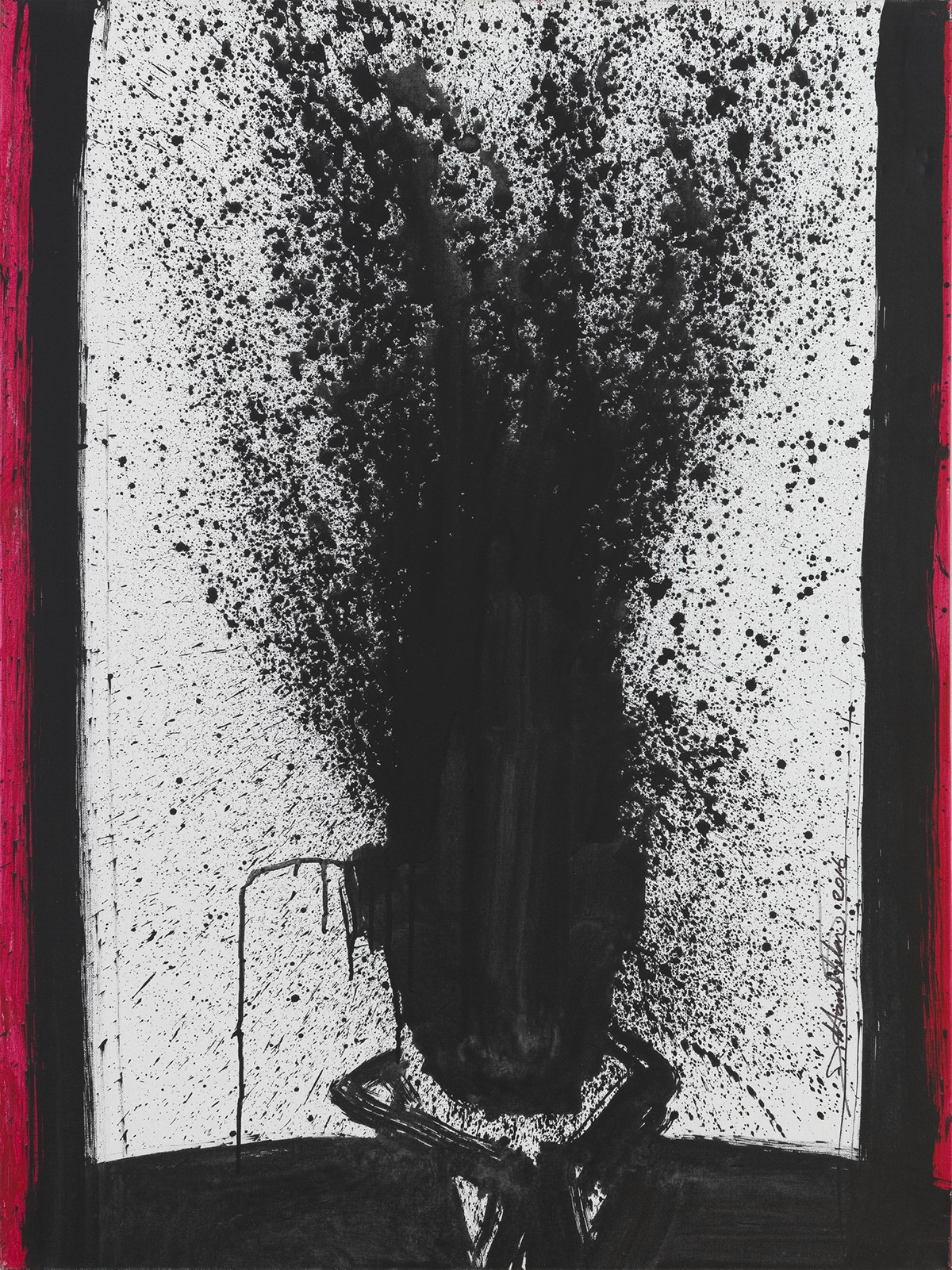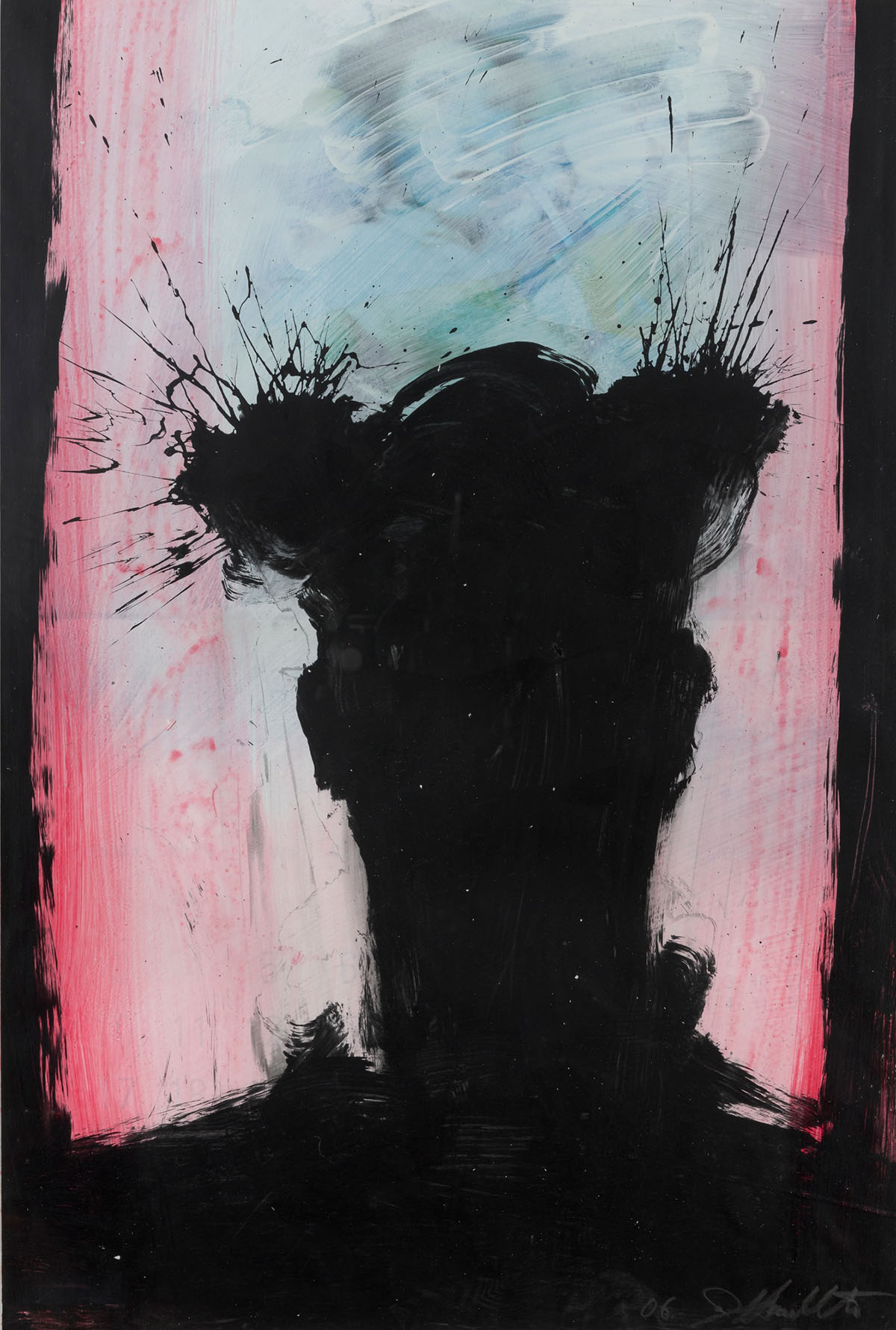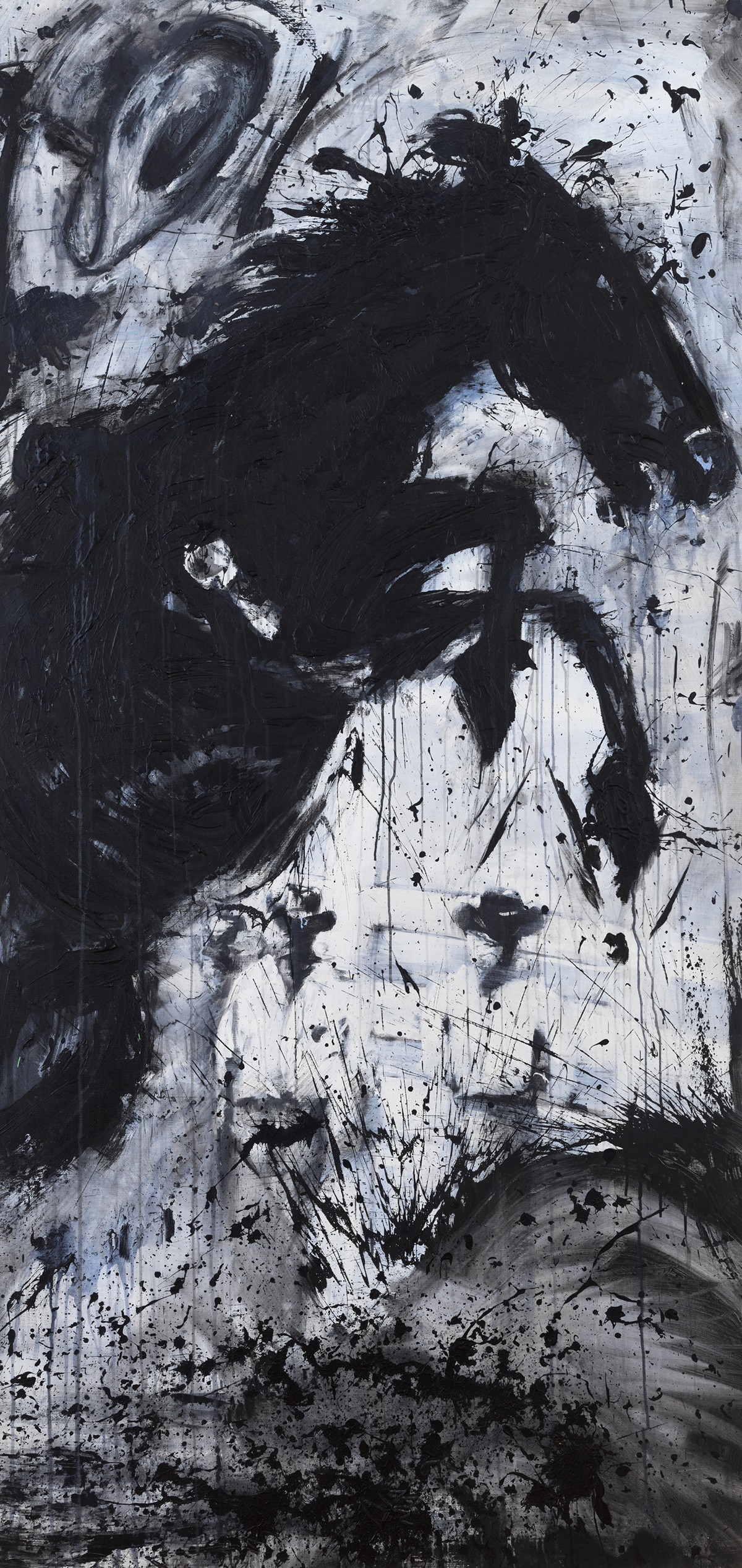Timothy Greenfield-Sanders, Portrait of Richard Hambleton, 1983
Richard Hambleton was one of the most prominent and pioneering figures of the downtown New York art scene throughout the 1980's, along with his contemporaries Keith Haring and Jean-Michel Basquiat. Some of his most acclaimed series include his Mass Murder Series, which was completed exclusively on the streets, which involved the artist outlining the formation of a body and mimicking the chalk outlines drawn by police officers at crime scenes. Following the success of this series and its much-garnered attention, Hambleton transitioned to more traditional forms of painting, and began his Shadowman paintings. Consisting of energetically painted, explosive black-silhouetted figures, Hambleton produced a number of these works in cities throughout the world, and even painted multiple figures on both sides of the Berlin Wall in 1984-85. Hambleton later went on to develop this series, and expanded to include the Marlboro man figure, painted in the same fashion as the Shadowman but portrayed directly onto canvas.
Describing his work as conceptual in its nature, the shadow figures depicted on the streets contained elements of theatricality, as they were strategically placed in dark alleyways, or on street corners thus relying on the element of surprise if an unsuspecting passerby were to stumble upon one of the figures. The distinctively emotional, contemplative and visceral responses elicited by Hambleton's work onto the viewer are some of the hallmarks of what makes his work stand apart from those of his contemporaries and other respective street artists, and solidified his legacy as one of the most important artists to emerge from the most vibrant period of the New York art scene.
Richard Hambleton was born in Vancouver, Canada and studied at the Vancouver School of Art. His work is held in the permanent collections of the following institutions: the Brooklyn Museum, the MoMa, the Andy Warhol Museum and he has exhibited on two occasions at the Venice Biennale. He was the subject of a major retrospective that travelled internationally, including in Moscow at the Museum of Modern Art of the Russian Academy. Hambleton lived and worked in New York until his passing in 2017.










